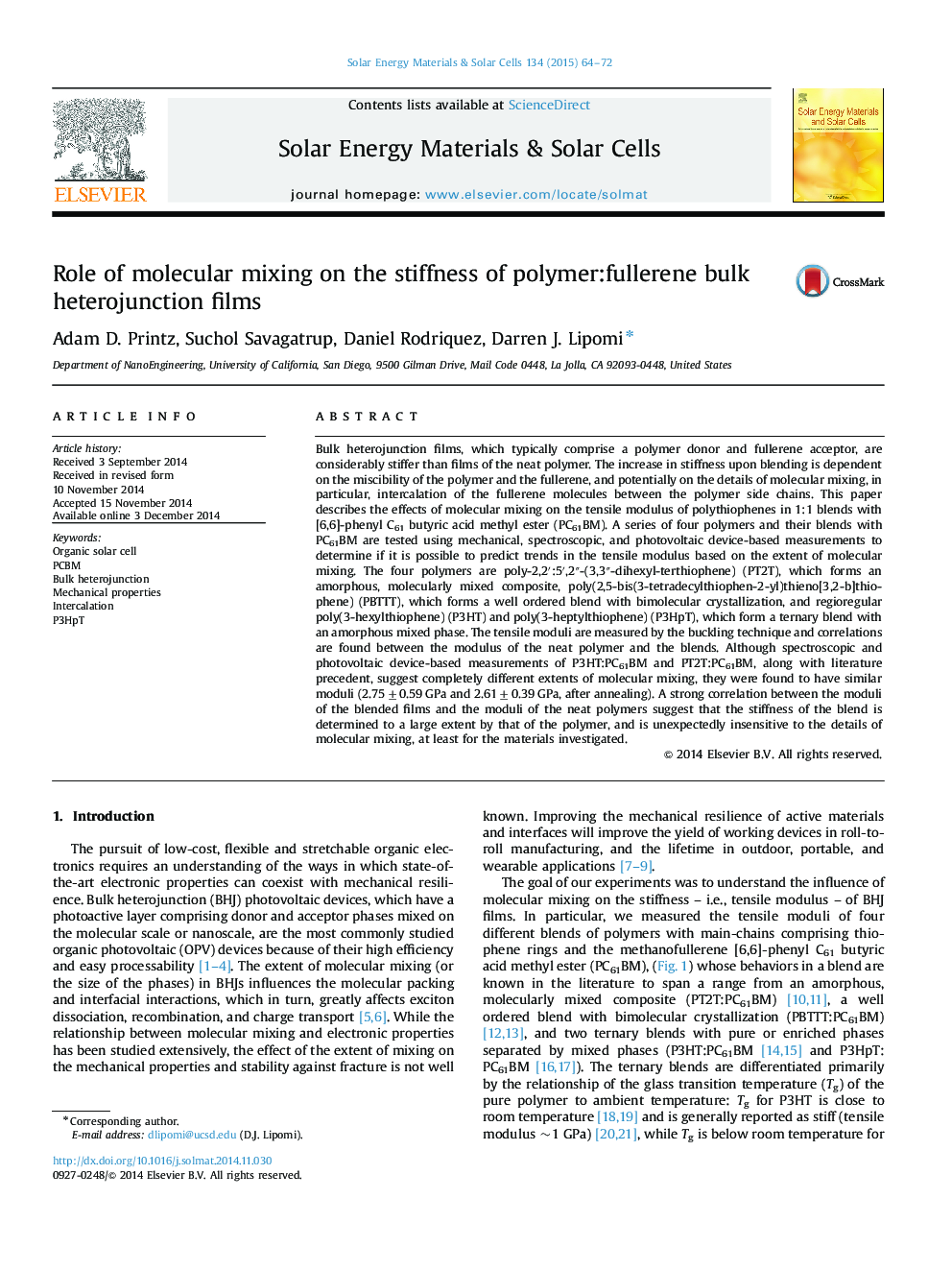| کد مقاله | کد نشریه | سال انتشار | مقاله انگلیسی | نسخه تمام متن |
|---|---|---|---|---|
| 77892 | 49309 | 2015 | 9 صفحه PDF | دانلود رایگان |
• The mechanical properties of organic solar cells are important for flexibility.
• The stiffness of organic semiconductors depends on molecular mixing.
• The microstructure of polymer:fullerene blends is highly variable.
• We hypothesized that molecular mixing would affect the modulus.
• Correlation of the blend modulus with the polymer modulus was independent of mixing.
Bulk heterojunction films, which typically comprise a polymer donor and fullerene acceptor, are considerably stiffer than films of the neat polymer. The increase in stiffness upon blending is dependent on the miscibility of the polymer and the fullerene, and potentially on the details of molecular mixing, in particular, intercalation of the fullerene molecules between the polymer side chains. This paper describes the effects of molecular mixing on the tensile modulus of polythiophenes in 1:1 blends with [6,6]-phenyl C61 butyric acid methyl ester (PC61BM). A series of four polymers and their blends with PC61BM are tested using mechanical, spectroscopic, and photovoltaic device-based measurements to determine if it is possible to predict trends in the tensile modulus based on the extent of molecular mixing. The four polymers are poly-2,2′:5′,2″-(3,3″-dihexyl-terthiophene) (PT2T), which forms an amorphous, molecularly mixed composite, poly(2,5-bis(3-tetradecylthiophen-2-yl)thieno[3,2-b]thiophene) (PBTTT), which forms a well ordered blend with bimolecular crystallization, and regioregular poly(3-hexylthiophene) (P3HT) and poly(3-heptylthiophene) (P3HpT), which form a ternary blend with an amorphous mixed phase. The tensile moduli are measured by the buckling technique and correlations are found between the modulus of the neat polymer and the blends. Although spectroscopic and photovoltaic device-based measurements of P3HT:PC61BM and PT2T:PC61BM, along with literature precedent, suggest completely different extents of molecular mixing, they were found to have similar moduli (2.75±0.59 GPa and 2.61±0.39 GPa, after annealing). A strong correlation between the moduli of the blended films and the moduli of the neat polymers suggest that the stiffness of the blend is determined to a large extent by that of the polymer, and is unexpectedly insensitive to the details of molecular mixing, at least for the materials investigated.
Figure optionsDownload as PowerPoint slide
Journal: Solar Energy Materials and Solar Cells - Volume 134, March 2015, Pages 64–72
